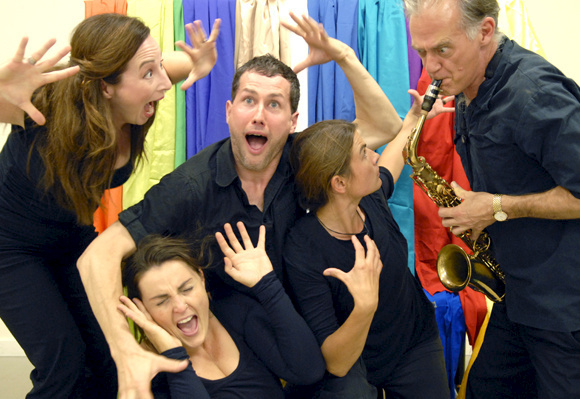
Drama therapy is an expressive form of psychotherapy where imagination is prioritized, spontaneity unlocks the hidden realm of the unconscious, and the client is the designated driver on the journey toward discovering his or herself. Due to drama therapy being such a new and dynamic field, the different approaches in it are linked by purpose but differ greatly in the methods and the theories that mandate the course of treatment. In this blog I will explore how David Read Johnson’s Developmental Transformations (DvT), an existentialistic approach, informs the practice of drama therapy with clients.
In Current Approaches in Drama Therapy (2009), Johnson introduces the DvT approach as “a form of drama psychotherapy that is based on an understanding of the process and dynamics of free play”. During the therapy session, both client and therapist engage in Free Play for the duration of the session. At times, the therapist will stand aside on a “witness rug” so as to be able to provide reflection and insight to the client’s experience. The worlds of imagination and reality are one during a therapy session, in an attempt to integrate and accept of all realms of self. The four components of this approach are:
- Transformation
- Embodiment
- Encounter
- Playspace
Johnson integrates elements of Existential Therapy, where the relationship between therapist and client is one where there are no power differences and they both join in a quest to maintain existence, or re-emerge, in an otherwise turbulent world. The term of “reemerging” is stated in R.D Laing’s work (a pioneer of existential therapy) as well as in Johnson’s. While Laing refers to the therapeutic goal to re-emerging as more whole, Johnson refers to the emerging and reemerging images and impulses that arise within the spontaneous interaction in the play space. Both of them explicitly note the sense of incompletion of the human experience and the importance of exploring this incompletion within the context of intimate relationships.
Like other approaches in the field of drama therapy, there is a correlation between DvT’s play space to the shamanistic trance-related sacred space. In the shamanic sense, the sacred space is a place of healing that is safe. The playfulness that DvT entails enables the trance-like state of conscious to be done in a humorous and playful manner. Like shamans, Johnson requires the practitioners of his approach not to take themselves seriously. This lightness is intended to enable the client to explore otherwise dark areas in a playful sense. (Glaser, 2004)
Matters of boundaries within DvT are explored in The Bifuracted Gift: Love and Intimacy in Drama Psychotherapy (Porter, 2000). In this article, Porter uses three case studies of DvT that relate to issues of longing, intimacy and boundaries within this physical approach. The complexities that arise within this setting are essentially a great opportunity for growth. Although the transference that takes place in therapy can be manifested and demonstrated physically in DvT, it also allows the client to view these emotions, replay and reframe them. The feelings of longing and the relationship between the client and therapist can instill trust in an untrusting client due to the fact that therapist is in the same play space with them. The artificial separation of ranks within conventional psychotherapy is eliminated by the complete emersion of the therapist in the session.
DvT has been proven to be highly effective in clients with PTSD due to the re-enactment of the trauma in the play space that provides vividness to the trauma. The engagement of the entire sensory system has been shown to be pivotal in the desensitization processing of trauma. Although DvT isn’t originally trauma centered, the existential angst it stems from aides trauma as well, as desensitizing in trauma and in existential complexities are identical in emotional process (Sanjani and Johnson, 2014, p. 73).
With application of these concepts into the therapeutic process, a relationship is established and reestablished between the client/s and the therapist (there is a group model of this approach). The play space is served as a place where the client can explore all facets of their ever-changing self. Through exploration of the relationship between client and therapist, images that emerge are given room to exist, to repeat and to change.
Want to learn more? Make sure to attend Maya’s talk in NYC titled “The PACT Team as Ensemble: A Rehearsal for Life” on October 25th from 8am-10am. For more information and tickets please visit www.newperspectivestx.com

